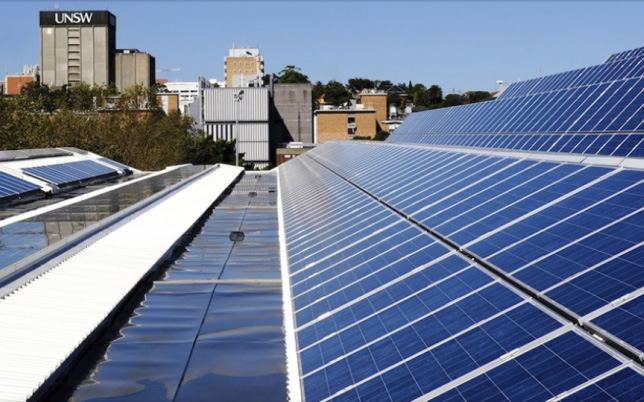Summary
The project will develop chalcogenide/silicon (Si) tandem photovoltaic (PV) technology and support its pathway towards commercialisation by integrating already commercialised chalcogenide thin-film PV technologies and Si PV technologies to demonstrate highly efficient and stable tandem cell designs.
Need
This project is funded under the ULCS PV Research and Development Round and will build on ARENA’s previous investment into solar PV that support projects aligning with ARENA’s ‘Solar 30 30 30’ target to improve module efficiency to 30 per cent and reduce total construction costs of utility scale solar farms to 30 cents per watt by 2030. Funding is being made available to focus on commercialisation prospects, which will take place after an initial R&D phase, to assist getting the new technologies into the market.
Si-based tandem technology shows promise in overcoming the theoretical performance limits of conventional single junction solar cell technology. There is ongoing research into optimal top cells for Si-based tandems, with no confirmable solutions meeting all requirements for fully sustainable thin-film/Si-based tandem cells in a reasonable timeframe
High bandgap chalcogenide PV technologies are among the highest efficiency top cells demonstrated with potential for high durability and scalability for manufacturing.
Action
The project will develop high efficiency chalcogenide/Si tandem solar cells and investigate variety of tandem connection strategies. The key activities of the project include:
- Developing high efficiency semi-transparent high bandgap chalcogenide top cells, building on UNSW’s already successful R&D into chalcogenide technologies.
- Developing and optimising different tandem connection methods.
- Scaling up the chalcogenide/Si tandem solar cells to larger sizes.
- As a stretch goal, developing low bandgap chalcogenide bottom cell for 3-cell monofacial tandem technology.
The project also aims to undertake commercialisation activities such as detailed cost analysis of high throughput fabrication processes for chalcogenide/Si tandem solar cells, and may also include development of turn-key solutions for chalcogenides top cell technologies and UNSW’s transparent conductive adhesion (TCA) technology.
Outcome
The project will achieve the following outcomes:
- Acceleration of the development of commercially competitive modules with efficiencies above 30 per cent, through development of high-efficiency chalcogenide/Si tandem technology, and novel tandem connection strategies.
- Acceleration of cost reductions for utility scale solar PV towards 30 cents per watt or below $15 per MWh, through development of large size chalcogenide/Si tandem solar cells.
- Improvement in chalcogenide/Si tandem solar cell stability in order to support progression towards 30 year solar module asset life.
- Improved collaboration between research and industry partners to support research on chalcogenide/Si tandem solar cells and encourage progression towards commercialisation of chalcogenide/Si tandem technology.
- Increased knowledge relevant to chalcogenide/Si tandem technology through dissemination of key research findings to the photovoltaic research community, industry, and the public.
Additional impact
This will establish Australia at the forefront internationally for the next generation Si-based tandem cells technology and support the pathway for industry to apply chalcogenide/Si tandem technology in the future. The project will also create more than 10 jobs including: chief investigators contributing to the project, newly recruited research staff and related PhD students.




